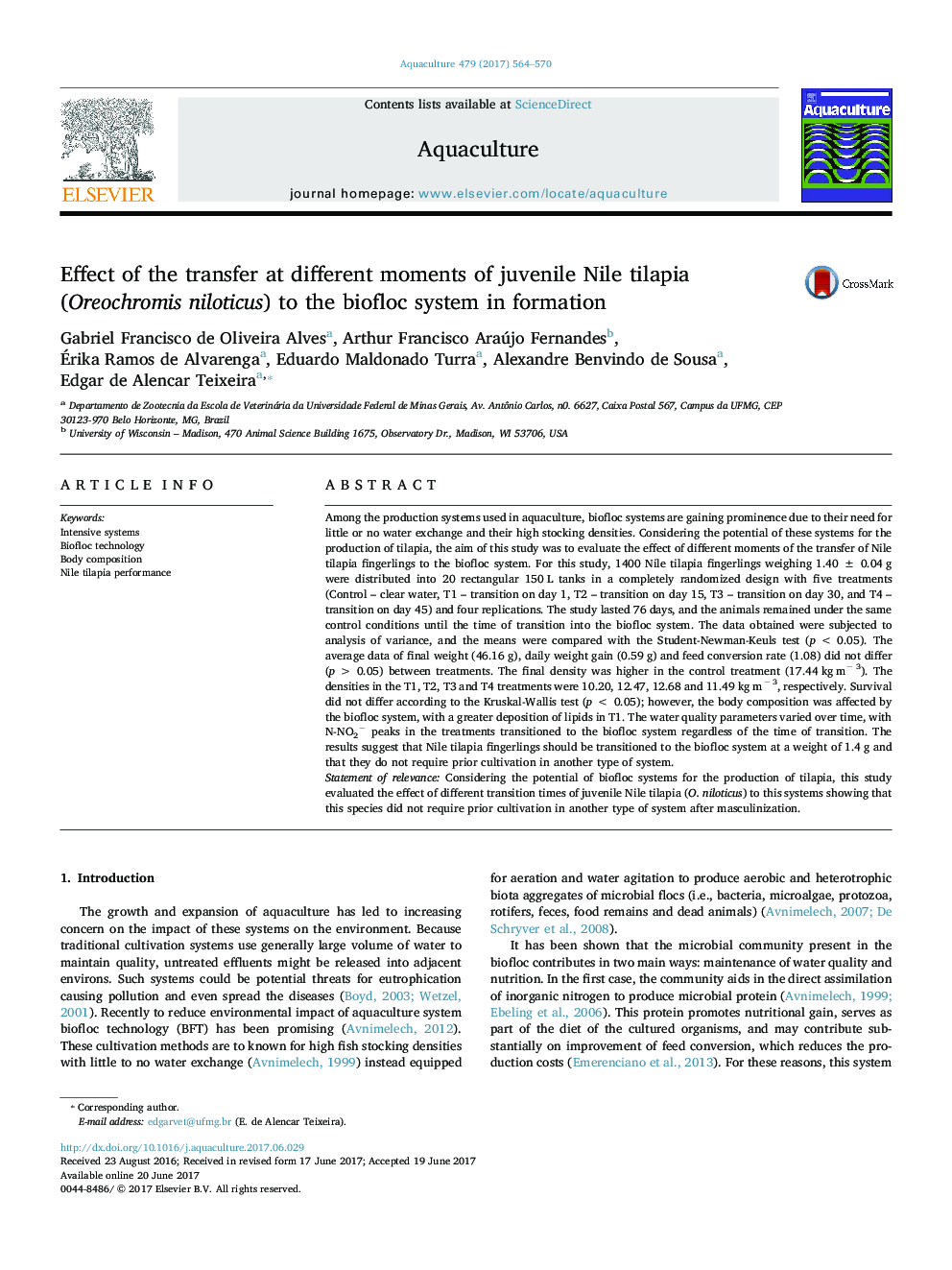| کد مقاله | کد نشریه | سال انتشار | مقاله انگلیسی | نسخه تمام متن |
|---|---|---|---|---|
| 5539289 | 1552809 | 2017 | 7 صفحه PDF | دانلود رایگان |

- We compared performance of juvenile Nile tilapia cultured in biofloc systems for different periods of time and control system.
- Body composition differed in animals that remained for 76Â days in a biofloc system compared to the control.
- Animals can be transitioned to a biofloc system in formation after the masculinization phase.
Among the production systems used in aquaculture, biofloc systems are gaining prominence due to their need for little or no water exchange and their high stocking densities. Considering the potential of these systems for the production of tilapia, the aim of this study was to evaluate the effect of different moments of the transfer of Nile tilapia fingerlings to the biofloc system. For this study, 1400 Nile tilapia fingerlings weighing 1.40 ± 0.04 g were distributed into 20 rectangular 150 L tanks in a completely randomized design with five treatments (Control - clear water, T1 - transition on day 1, T2 - transition on day 15, T3 - transition on day 30, and T4 - transition on day 45) and four replications. The study lasted 76 days, and the animals remained under the same control conditions until the time of transition into the biofloc system. The data obtained were subjected to analysis of variance, and the means were compared with the Student-Newman-Keuls test (p < 0.05). The average data of final weight (46.16 g), daily weight gain (0.59 g) and feed conversion rate (1.08) did not differ (p > 0.05) between treatments. The final density was higher in the control treatment (17.44 kg mâ 3). The densities in the T1, T2, T3 and T4 treatments were 10.20, 12.47, 12.68 and 11.49 kg mâ 3, respectively. Survival did not differ according to the Kruskal-Wallis test (p < 0.05); however, the body composition was affected by the biofloc system, with a greater deposition of lipids in T1. The water quality parameters varied over time, with N-NO2â peaks in the treatments transitioned to the biofloc system regardless of the time of transition. The results suggest that Nile tilapia fingerlings should be transitioned to the biofloc system at a weight of 1.4 g and that they do not require prior cultivation in another type of system.Statement of relevanceConsidering the potential of biofloc systems for the production of tilapia, this study evaluated the effect of different transition times of juvenile Nile tilapia (O. niloticus) to this systems showing that this species did not require prior cultivation in another type of system after masculinization.
Journal: Aquaculture - Volume 479, 1 October 2017, Pages 564-570